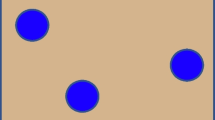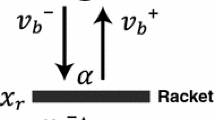Abstract
The current study examined the effect of simple complementary auditory feedback (CAF) on performance and performance strategies in a puzzle completion task. Fifty-three undergraduate students were randomly assigned to one of two training groups: a CAF group, which received simple auditory feedback during the task; and a Control group, which did not receive the auditory feedback. The difference between the higher and lower achievers (in terms of time needed to complete the puzzle) was larger in the CAF group compared to the Control group. As for performance strategies, participants in the CAF group engaged less in strategies which involved pre-planning (for example, separating out edge pieces) and focused more on trying to maximize short-term achievements (for example, through trial and error). The findings suggest that CAF which entails low-level feedback is not recommended for weaker performers, for whom it promotes less-effective strategies focused on short-term goals.





Similar content being viewed by others
References
Ackerman R, Leiser D (2014) The effect of concrete supplements on metacognitive regulation during learning and open-book test taking. Br J Educ Psychol 84(2):329–348
Baddeley AD (1990) Human memory: theories and practice. Lawrence Erlbaum Associates, London
Baddeley AD (1998) Working memory: memoire de travail. Life Sci 321:167–173
Brooks L (1967) The suppression of visualization by reading. Q J Exp Psychol 19:289–299
Cockburn A, Brewster S (2005) Multimodal feedback for the acquisition of small targets. Ergonomics 48(9):1129–1150
Dadashi N, Golightly D, Sharples S (2017) Seeing the woods for the trees: the problem of information inefficiency and information overload on operator performance. Cogn Technol Work 19(4):561–570
Frick R (1984) Using an auditory and a visual short-term store to increase digit span. Mem Cogn 12:507–514
Garrett M, McMahon M (2011) Exploring the use of audio–visual feedback within 3D virtual environments to provide complex sensory cues for scenario-based learning. In: Australasian Society for Computers in Learning in Tertiary Education Annual Conference (ascilite). Hobart, Tasmania
Goodman JS, Wood RE, Hendrickx M (2004) Feedback specificity, exploration, and learning. J Appl Psychol 89(2):248–262
Lecuyer A, Megard C, Burkhardt JM, Lim T, Coquillart S, Coiffet P, Graux L (2002) The effect of haptic, visual and auditory feedback on an insertion task on a 2-screen workbench. In: Proceedings of the Immersive Projection Technology Symposium, Orlando, FL, USA
Luke T, Brook-Carter N, Parkes AM, Grimes E, Mills A (2006) An investigation of train driver visual strategies. Cogn Technol Work 8(1):15–29
Mayer RE (2001) Multimedia learning. Cambridge University Press, New York
Mayer RE (2011) Applying the science of learning to multimedia instruction. In: Mestre J, Ross B (eds) Cognition in Education: psychology of learning and motivation, vol 55. Academic Press, San Diego, pp 77–108
Mayer RE, Anderson RB (1991) Animations need narrations: an experimental test of dual-coding hypothesis. J Educ Psychol 83:484–490
Mayer RE, Anderson RB (1992) The instructive animation: helping students build connections between words and pictures in multimedia learning. J Educ Psychol 84:444–452
Mayer RE, Sims VK (1994) For whom is a picture worth a thousand words? Extension of a dual-coding theory of multimedia learning. J Educ Psychol 86:389–401
Minotra D, McNeese MD (2017) Predictive aids can lead to sustained attention decrements in the detection of non-routine critical events in event monitoring. Cogn Technol Work 19(1):161–177
Mousavi S, Low R, Sweller J (1995) Reducing cognitive load by mixing auditory and visual presentation modes. J Educ Psychol 87:319–334
Muthukumar SL (2005) Creating interactive multimedia-based educational courseware: cognition in learning. Cogn Technol Work 7(1):46–50
Nabatilan LB, Aghazadeh F, Nimbarte AD, Harvey CC, Chowdhury SK (2012) Effect of driving experience on visual behavior and driving performance under different driving conditions. Cogn Technol Work 14(4):355–363
Novick LR, Sherman SJ (2008) The effects of superficial and structural information on online problem solving for good versus poor anagram solvers. Q J Exp Psychol 61:1098–1120
Rosch JL, Vogel-Walcutt JJ (2013) A review of eye-tracking applications as tools for training. Cogn Technol Work 15(3):313–327
Schreiner T, Lehmann M, Rasch B (2015) Auditory feedback blocks memory benefits of cueing during sleep. Nat Commun 6:8729
Shute VJ (2008) Focus on formative feedback. Rev Educ Res 78:153–189
Sweller J, van Merrienboer JJG, Paas FGWC (1998) Cognitive architecture and instructional design. Educ Psychol Rev 10:251–296
Thiede KW, Griffin T, Wiley J, Anderson M (2010) Poor metacomprehension accuracy as a result of inappropriate cue use. Discourse Process 47:331–362
Van Den Doel K, Kry PG, Pai DK (2001) FoleyAutomatic: physically-based sound effects for interactive simulation and animation. In: Proceedings of the 28th Annual Conference on Computer Graphics and Interactive Techniques. ACM, pp 537–544
van Merrienboer JJG, Sweller J (2005) Cognitive load theory and complex learning: recent development and future directions. Educ Psychol Rev 17:147–177
Vitense HS, Jacko JA, Emery VK (2003) Multimodal feedback: an assessment of performance and mental workload. Ergonomics 46:68–87
Yechiam E, Erev I, Yehene V, Gopher D (2003) Melioration and the transition from touch-typing training to everyday use. Hum Factors 45(4):671–684
Yuviler-Gavish N, Yechiam E, Kallai A (2011) Learning in multimodal training: visual guidance can be both appealing and disadvantageous in spatial tasks. Int J Hum Comput Stud 69(3):113–122
Zanotto D, Rosati G, Spagnol S, Stegall P, Agrawal SK (2013) Effects of complementary auditory feedback in robot-assisted lower extremity motor adaptation. IEEE Trans Neural Syst Rehabil Eng 21(5):775–786
Zhang Y, Sotudeh R, Fernando T (2005) The use of visual and auditory feedback for assembly task performance in a virtual environment. In: Proceedings of the 21st Spring Conference on Computer Graphics. ACM, pp 59–66
Acknowledgements
This research was supported in part by the Research Committee of ORT Braude College, Israel.
Author information
Authors and Affiliations
Corresponding author
Rights and permissions
About this article
Cite this article
Yuviler-Gavish, N., Madar, G. & Krisher, H. Effects on performance of adding simple complementary auditory feedback to a visual-spatial task. Cogn Tech Work 20, 289–297 (2018). https://doi.org/10.1007/s10111-018-0462-6
Received:
Accepted:
Published:
Issue Date:
DOI: https://doi.org/10.1007/s10111-018-0462-6




